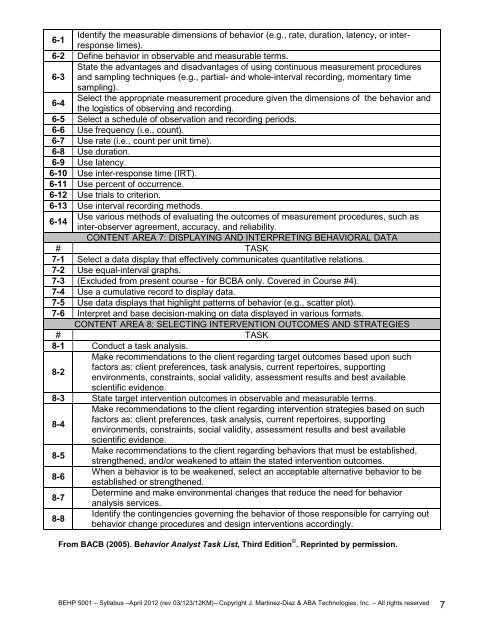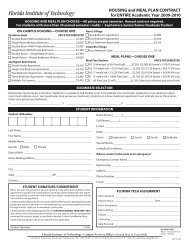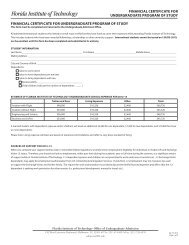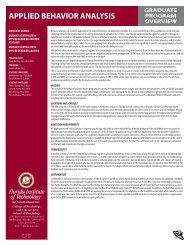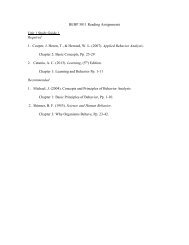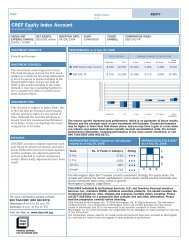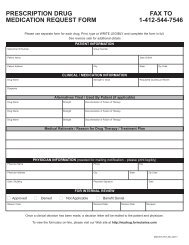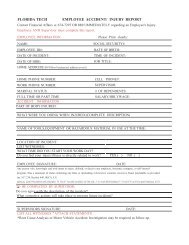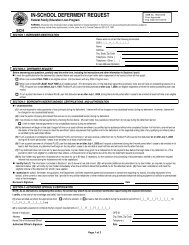BEHP 5001 - Florida Institute of Technology
BEHP 5001 - Florida Institute of Technology
BEHP 5001 - Florida Institute of Technology
Create successful ePaper yourself
Turn your PDF publications into a flip-book with our unique Google optimized e-Paper software.
6-1<br />
Identify the measurable dimensions <strong>of</strong> behavior (e.g., rate, duration, latency, or interresponse<br />
times).<br />
6-2 Define behavior in observable and measurable terms.<br />
State the advantages and disadvantages <strong>of</strong> using continuous measurement procedures<br />
6-3 and sampling techniques (e.g., partial- and whole-interval recording, momentary time<br />
sampling).<br />
6-4<br />
Select the appropriate measurement procedure given the dimensions <strong>of</strong> the behavior and<br />
the logistics <strong>of</strong> observing and recording.<br />
6-5 Select a schedule <strong>of</strong> observation and recording periods.<br />
6-6 Use frequency (i.e., count).<br />
6-7 Use rate (i.e., count per unit time).<br />
6-8 Use duration.<br />
6-9 Use latency.<br />
6-10 Use inter-response time (IRT).<br />
6-11 Use percent <strong>of</strong> occurrence.<br />
6-12 Use trials to criterion.<br />
6-13 Use interval recording methods.<br />
6-14<br />
Use various methods <strong>of</strong> evaluating the outcomes <strong>of</strong> measurement procedures, such as<br />
inter-observer agreement, accuracy, and reliability.<br />
CONTENT AREA 7: DISPLAYING AND INTERPRETING BEHAVIORAL DATA<br />
# TASK<br />
7-1 Select a data display that effectively communicates quantitative relations.<br />
7-2 Use equal-interval graphs.<br />
7-3 (Excluded from present course - for BCBA only. Covered in Course #4).<br />
7-4 Use a cumulative record to display data.<br />
7-5 Use data displays that highlight patterns <strong>of</strong> behavior (e.g., scatter plot).<br />
7-6 Interpret and base decision-making on data displayed in various formats.<br />
CONTENT AREA 8: SELECTING INTERVENTION OUTCOMES AND STRATEGIES<br />
# TASK<br />
8-1 Conduct a task analysis.<br />
Make recommendations to the client regarding target outcomes based upon such<br />
8-2<br />
factors as: client preferences, task analysis, current repertoires, supporting<br />
environments, constraints, social validity, assessment results and best available<br />
scientific evidence.<br />
8-3 State target intervention outcomes in observable and measurable terms.<br />
Make recommendations to the client regarding intervention strategies based on such<br />
8-4<br />
factors as: client preferences, task analysis, current repertoires, supporting<br />
environments, constraints, social validity, assessment results and best available<br />
scientific evidence.<br />
8-5<br />
Make recommendations to the client regarding behaviors that must be established,<br />
strengthened, and/or weakened to attain the stated intervention outcomes.<br />
8-6<br />
When a behavior is to be weakened, select an acceptable alternative behavior to be<br />
established or strengthened.<br />
8-7<br />
Determine and make environmental changes that reduce the need for behavior<br />
analysis services.<br />
8-8<br />
Identify the contingencies governing the behavior <strong>of</strong> those responsible for carrying out<br />
behavior change procedures and design interventions accordingly.<br />
From BACB (2005). Behavior Analyst Task List, Third Edition © . Reprinted by permission.<br />
<strong>BEHP</strong> <strong>5001</strong> – Syllabus –April 2012 (rev 03/123/12KM)– Copyright J. Martinez-Diaz & ABA Technologies, Inc. – All rights reserved<br />
7


